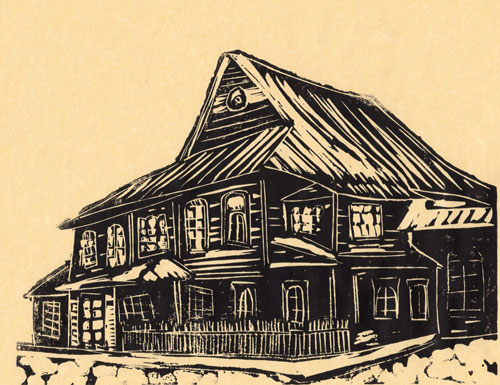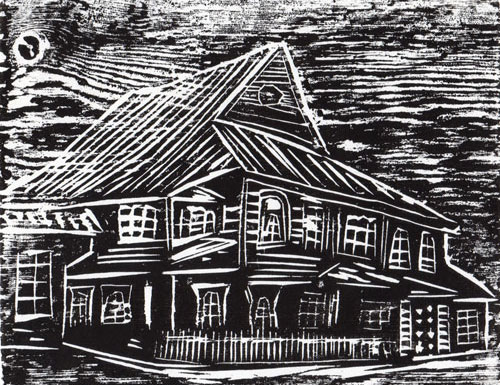Lost Treasures: The Wooden Synagogues of Eastern Europe The Artwork of Bill Farran
Mahilyow, Belarus - Linocut
Mahilyow, Belarus - Linocut
Mahilyow, Belorussian Mogilev [Russian], Molev [Yiddish], Mohylew [Polish]
The first record of Jews in Belarus was in the 14th century when it was a region within the Commonwealth of Poland-Lithuania and referred to as Belorussia. Despite being under the protection of the Polish crown, the Jews of Mahilyow frequently had problems with their Russian neighbors, resulting in many pogroms.
The wooden synagogue, referred to as the “Cold Synagogue”, was built around 1680. It was called the Cold Synagogue because there was no central heating. The interior was almost entirely covered with magnificent colorful folk paintings made in the 1740s by Chaim ben Yitzchak ha-Levi Segal. In the beginning of the 20th century, several ethnographic expeditions, led by Shloyme Zanvl Rappoport, known by his pseudonym S. Ansky (or S.An-sky) and Solomon Yudovin documented and photographed the interiors of the synagogue. The synagogue was closed in 1938 and then dismantled by the Soviet authorities.
Mahilyow was conquered by Wehrmacht forces on 26 July 1941 and remained under German occupation until 28 June 1944. During that period, the Jews of Mogilev were ghettoized and systematically murdered.
Purchase a print
Original linocut prints are 8x10 inches, and are available either unmatted or in an 11x14 matte.
I also offer matted 5x7 digital prints. These prints are created from high-res digital images and come in an 8x10 matte.



